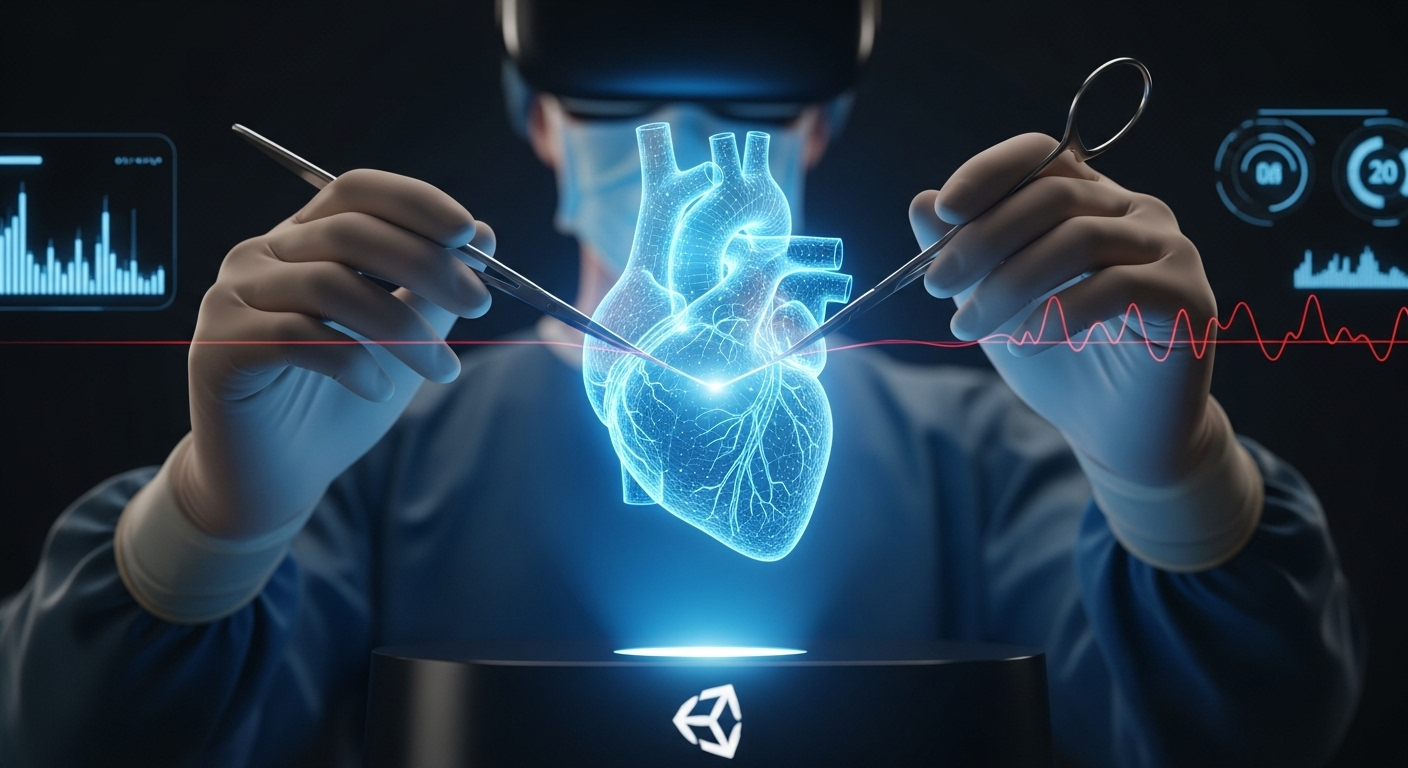Enhancing Surgical Precision: The Definitive Guide to Unity-Based Medical Simulation
game development masterclass

In the world of surgery, the pursuit of perfection is relentless. The traditional apprenticeship model of “see one, do one, teach one,” while a cornerstone of medical education for centuries, is now facing unprecedented pressures: procedures are more complex, resident hours are limited, and cadaver labs are costly and low‑fidelity.
There is an urgent need for a new training paradigm—safe, repeatable, data‑driven, scalable—one that lets surgeons hone skills like pilots train in simulators.
This is not theory. It’s the reality today with advanced, Unity‑based surgical simulators.
This guide is for forward‑thinking leaders in the medical community: Surgical Program Directors, Heads of Medical Education, and MedTech innovators. It explores how real‑time 3D simulation is transforming training, improving precision, accelerating skill acquisition, and enhancing patient outcomes.
This is a look at Aaryavarta Health: Custom Simulation and Visualization Solutions for Medical Professionals—the technology, methodology, and impact.
Part 1: The Problem Definition — Limits of Traditional Training
An honest audit of traditional methods reveals:
- Scarcity of Repetition: Residents rarely repeat critical procedure steps enough to master them.
- Cost & Fidelity of Cadaver Labs: Expensive, logistically complex, and embalmed tissue fails to mimic living anatomy.
- High‑Risk, Low‑Frequency Events: Rare complications (e.g., severe hemorrhage) are first encountered in real surgery.
- Subjective Assessment: Skill evaluation relies on attending surgeons’ judgments rather than hard data.
Part 2: The Unity Solution — Zero‑Risk Virtual OR
A Unity surgical simulator is a medically‑accurate, physics‑based digital twin for immersive practice:
Core Components
- Stereoscopic 3D Immersion: VR headsets deliver true depth perception necessary for laparoscopy.
- Anatomical Accuracy: Models built from anonymized DICOM scans reflect real human variation.
- Physics‑Based Tissue Simulation: Tissues deform, bleed, and respond like the real thing.
- Haptic Feedback: Devices provide tactile cues—feeling soft tissue resistance or bone drilling—to build muscle memory.
Case Study: Arthroscopic Knee Surgery
Challenge: Complex hand‑eye coordination viewing a 2D screen.
Simulation: VR controllers mimic instruments; a virtual monitor displays the internal joint view.
Outcome: Trainees practice endlessly in zero‑risk, tracking efficiency, time, and accidental damage metrics.
Part 3: Data‑Driven Surgical Assessment
Simulators collect precise performance data for each session:
- Time to Completion
- Economy of Motion (hand path distance)
- Path Accuracy (deviation from ideal trajectory)
- Force Application (measured by haptics)
- Error Logging (e.g., entering “no‑go” zones)
- Benchmarking against peers or expert profiles
This objective data enables targeted training plans and measurable progress.
Part 4: The MedTech Advantage
MedTech marketers face expensive demo kits and limited surgeon time. The Virtual Device Demonstrator solves this:
- Interactive 3D model of your device runs on laptops or in browsers.
- Surgeons experience the key workflow advantages hands‑on.
- Web link “leave‑behind” lets prospects explore anytime.
Part 5: Empowering the Patient
Interactive tablet apps transform consultations:
- Display 3D models of a patient’s own anatomy.
- Highlight areas of concern visually.
- Walk through planned procedures step‑by‑step.
Case Study: An interactive patient app increased adherence by 40%.
Conclusion: A New Standard in Medicine
Unity‑based simulation augments—not replaces—surgeons, setting a new excellence standard in training, MedTech sales, and patient communication.
For surgical programs: data‑driven, zero‑risk mastery. For MedTech: efficient, engaging demos. For patients: deeper understanding and better care.
Take the Next Step
Aaryavarta Health specializes in custom medical simulations for leading hospitals, universities, and MedTech companies.
- Request a Live Demo: Schedule a confidential walkthrough of our surgical simulation platforms.
- Discuss Your Project: Consult with our experts for a detailed proposal.
Contact Aaryavarta Health today to set a new standard of excellence.
FAQs
General Questions
- What problem does simulation solve?
It addresses limited repetition, high cadaver costs, rare event practice, and subjective assessment by offering a safe, data‑driven training paradigm. - Who benefits?
Surgical Program Directors, Medical Educators, MedTech innovators, and clinicians improving patient communication. - Is it just a game?
No. It’s a medically‑accurate, physics‑based digital twin built from real imaging data for critical skill development.
Training & Technology
- How does it improve cadaver labs?
Eliminates high costs and logistics; virtual tissue fidelity closes training gaps. - Can rare complications be practiced?
Yes—zero‑risk environment for repeated practice until mastery. - How is performance tracked?
KPIs (time, motion, accuracy, force) and error logs enable targeted training.
MedTech & Patient Education
- How does it aid sales?
Virtual Device Demonstrators replace bulky demo kits with interactive 3D experiences. - How does it help patients?
Interactive 3D models enhance understanding and adherence to treatment plans.
